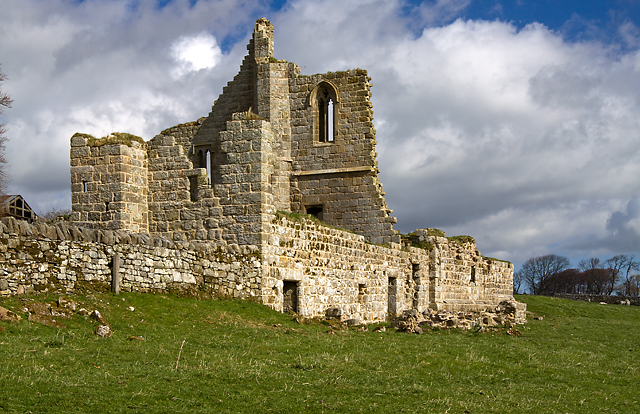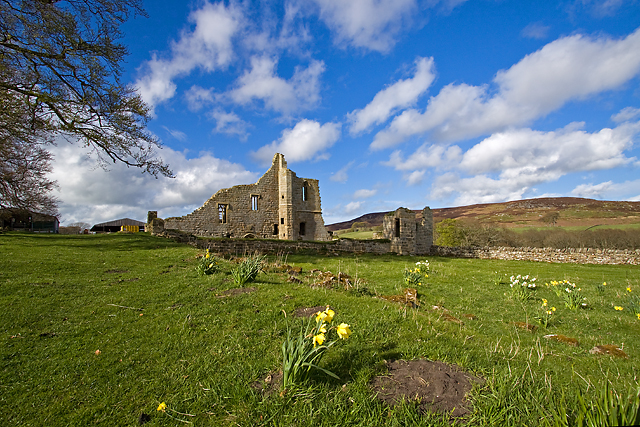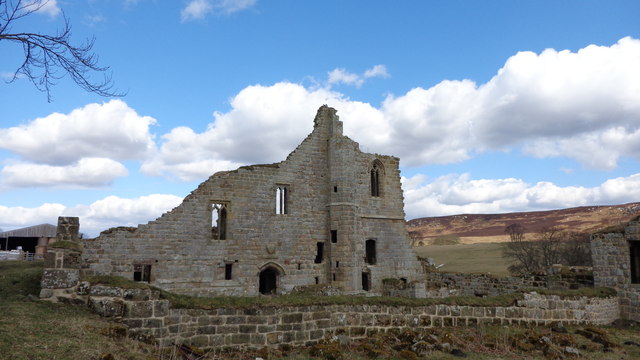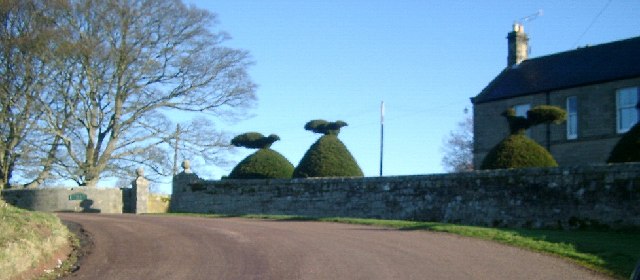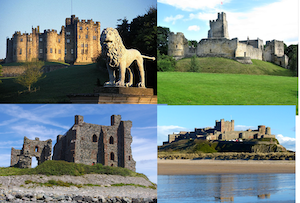Topics > Northumberland > Cartington > Cartington Castle
Cartington Castle
Cartington Castle is a ruinous, partly restored medieval English castle in the village of Cartington, 2 miles (3.2 km) north-west of Rothbury in the county of Northumberland, England looking down on the River Coquet. It is a Scheduled Ancient Monument and a Grade I listed building.
Its first recorded owner was Ralph Fitzmain who held it in 1154. In the late 14th century a pele tower was built. This was extended to include a great hall, and probably a tower-defended courtyard, by John Cartington in 1442 when he was granted a licence to crenellate his home.
In November 1515 Margaret, Queen of Scots, with her baby daughter Margaret stayed here on her journey from Harbottle Castle. Nearly ten years later, Lord Dacre stationed his troops here on a march north to join the Earl of Surrey.
During the Civil War the castle was a major Royalist centre. Sir Edward Widdrington raised 2,000 foot Royalist soldiers and 200 horse and withheld a Parliamentary siege for over two hours in 1648, but the castle was eventually taken and slighted by the enemy.
Despite some demolition, the castle continued to be occupied until finally abandoned in the 1860s. In 1887 Lord Armstrong partially restored the castle in order to prevent its complete disintegration.
Visit the page: Cartington Castle for references and further details. You can contribute to this article on Wikipedia.

from https://historicengland.org.u…
RUINS OF CARTINGTON CASTLE - List Entry
- "Fortified Manor House: Several C14 and early C15 builds; alterations and extensions in late C16 or early C17; partial demolition following 1648 siege, with part of hall range and north-east …
Added by
Simon Cotterill
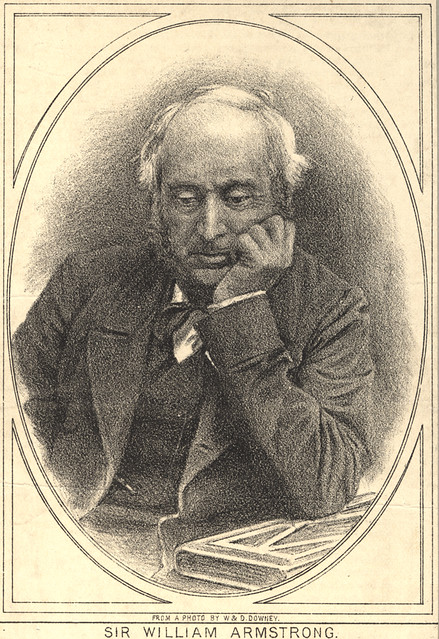
Co-Curate Page
Lord William Armstrong (1810-1900)
- Overview About William Armstrong William George Armstrong was born on 26th November 1810, in Shieldfield, Newcastle. He became a prominent engineer and industrialist who founded the Armstrong Whitworth company, producing armaments which …

from http://www.gatehouse-gazettee…
CARTINGTON CASTLE
- "The ruins of the castle at Cartington survive well and display several stages of building and re-building. In its original form it was intended to be a walled enclosure with …
Added by
Simon Cotterill
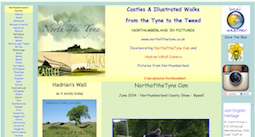
from http://www.northofthetyne.co.…
Cartington Castle
- Includes several photographs and history of the castle. "A Complex building in ruins includes C14 tower, extended to included a great hall, and probably a tower-defended courtyard, by John Cartington …
Added by
Simon Cotterill


from https://historicengland.org.u…
RUINS OF CARTINGTON CASTLE - List Entry
- "Fortified Manor House: Several C14 and early C15 builds; alterations and extensions in late C16 or early C17; partial demolition following 1648 siege, with part of hall range and north-east …
Added by
Simon Cotterill

Co-Curate Page
Lord William Armstrong (1810-1900)
- Overview About William Armstrong William George Armstrong was born on 26th November 1810, in Shieldfield, Newcastle. He became a prominent engineer and industrialist who founded the Armstrong Whitworth company, producing armaments which …

from http://www.gatehouse-gazettee…
CARTINGTON CASTLE
- "The ruins of the castle at Cartington survive well and display several stages of building and re-building. In its original form it was intended to be a walled enclosure with …
Added by
Simon Cotterill

from http://www.northofthetyne.co.…
Cartington Castle
- Includes several photographs and history of the castle. "A Complex building in ruins includes C14 tower, extended to included a great hall, and probably a tower-defended courtyard, by John Cartington …
Added by
Simon Cotterill
List number: 1042073
Keys to the Past HER: N2832
Post code: NE65 7JW
County: Northumberland
Grid ref: NU0387804533
